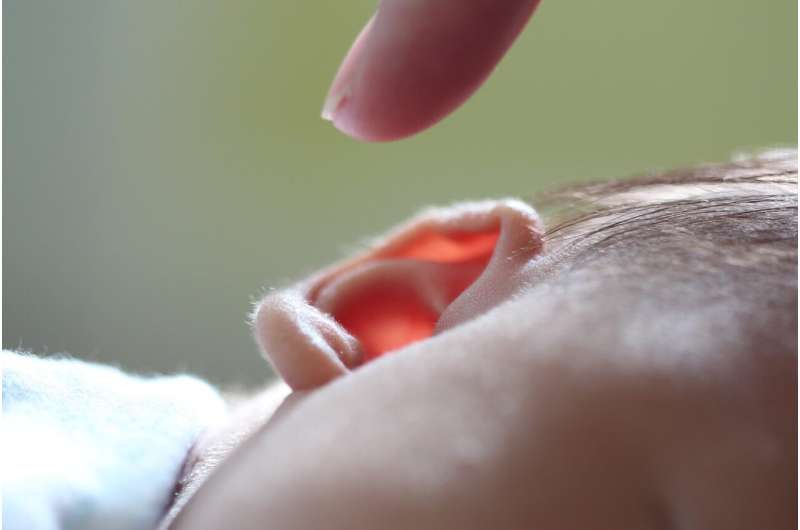Seeing is believing, even for the ears: Video goggles diagnose balance and movement loss

Our ears are not just organs for hearing; they also sense head motion, coordinate balance and enable us to move safely in different environments. Now, Johns Hopkins Medicine researchers have found that a test using commercially available, high-speed video goggles can help diagnose vestibular loss—weakness in the balance mechanism of the inner ear—more effectively.
In a study published March 25, 2021, in JAMA Otolaryngology-Head & Neck Surgery, Amir Kheradmand, M.D., director of research at the Johns Hopkins Medicine Neuro-Visual and Vestibular Disorders Center, and his team determined that the use of high-speed video goggles and automated analysis software can provide immediate feedback of vestibular loss during a clinical evaluation of patients with dizziness and balance problems.
Their findings show the test can be easily applied with a simple tilt of the head and torso together while the patient is seated and looking straight ahead.
"Imagine watching a video on a cell phone, and when you turn it from vertical to horizontal orientation, the screen adjusts accordingly," says Kheradmand, who also is an associate professor of neurology, and of otolaryngology-head and neck surgery at the Johns Hopkins University School of Medicine, and an adjunct faculty member of the Johns Hopkins University Laboratory for Computational Sensing and Robotics. "That's what our ears do; they sense the movement of our head, so that when you move your head to the right side, your eyes automatically move to the left. This helps keep the world steady in front of you."
"So, what we're measuring with the goggles is the rolling of the eyes relative to the head tilt so that we may do a comprehensive evaluation of the inner ear balance function," Kheradmand explains
Kheradmand says that the oculography (video recording of eye movements) goggles capture moving images of a patient's iris, the colored portion of the eye that controls the amount of light reaching the retina. The goggles also feature sensors that can track head motion and measure the balance function of the ear.
"You don't need complicated laboratory equipment," he says. "We can do the test in seconds to determine any loss of function."
The clinical trial described in the study compared data from the goggles for patients who had lost vestibular ability because of surgery with others who have normal inner ear function. Kheradmand says his team found that the test could accurately detect loss of vestibular function 83% of the time. Future studies, he says, will need to include patients with other causes and varying degrees of vestibular loss to better establish the test's diagnostic ability.
Kheradmand says the test not only uncovers past loss of vestibular function, but also can define if the loss is recent or chronic. However, he adds, the ability to detect loss varies with the length of time a patient has had the condition. In the study, patients who had a long history of loss were harder to identify, while those with very recent loss were easily found.
Kheradmand says that he and his team are excited about the potential use of their test to measure and track recovery from vestibular loss, as well as one day being able to track a patient's response to vestibular physical therapy.
More information: Shirin Sadeghpour et al. Evaluation of the Video Ocular Counter-Roll (vOCR) as a New Clinical Test of Otolith Function in Peripheral Vestibulopathy, JAMA Otolaryngology–Head & Neck Surgery (2021). DOI: 10.1001/jamaoto.2021.0176




















